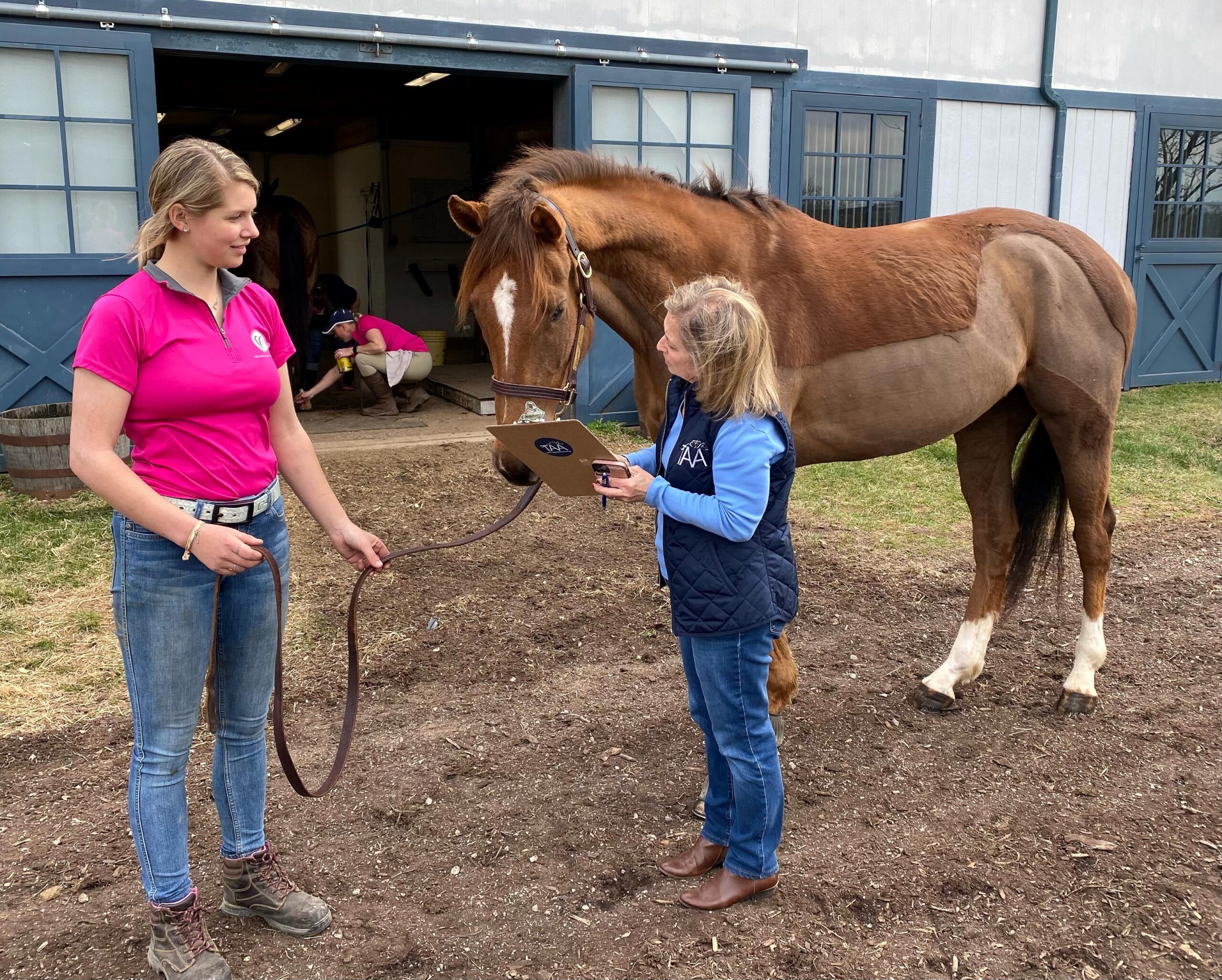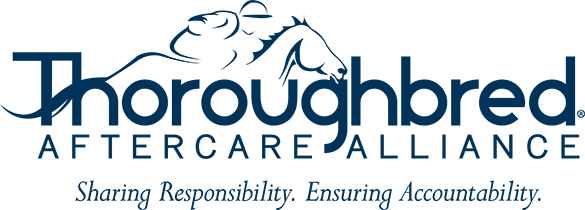TAA Inspections, ‘Not Just a Look Around the Barn’
By Suzie Picou-Oldham
I spent most of my early life on the racetrack backstretch as the daughter and assistant of a trainer and then as a jockey. My vision was limited to the business of racing. While we had horses that didn’t want to race or were not
competitive enough, we found secondary homes and careers for them, or the owners would take them home.
Later as the wife of a jockey, the horses would come and go in a flash. We seldom knew much about their history. As I became involved in the Thoroughbred breeding world, I saw horses come from the track as stallions and broodmares at different class levels.
Now, in my seventh year as the inspections administrator with the Thoroughbred Aftercare Alliance, I have learned so much about the efforts to repurpose racehorses. Aftercare is as much a part of our industry as racing and breeding.
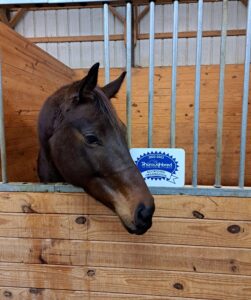
Shades of Roses at TAA-accredited Lollypop Farm in Fairport, N.Y.
ACCREDITATION
The TAA accredits, inspects, and awards grants to approved aftercare organizations that retire, retrain, and rehome Thoroughbreds. The process begins with an in-depth application. Only after the submission of all required documents and information will the accreditation committee review the application. If approved, the organization will be recommended for inspection as the next step of the accreditation process. Organizations can have one or several facilities where their program horses are housed or boarded. Each facility must be inspected by a TAA representative. The total number of facilities in need of inspection will vary from 165-180 for the current 81 organizations.
TYPES OF INSPECTIONS
Organizations apply for TAA accreditation every two years. For accreditation, an inspection includes a detailed questionnaire, a look at all aspects of each facility, and an evaluation of each horse. Every facility boarding registered Thoroughbreds for an organization will be inspected in this process.
In their “off” year a re-inspection takes place. This form consists of a checklist relating to basic equine care and the TAA Code of Standards plus an evaluation of each horse. At least one of each organization’s facilities will be inspected in the year they do not apply for accreditation.
Once accredited, organizations are required to submit a Self-Inspection form for each facility with photos twice during the year.
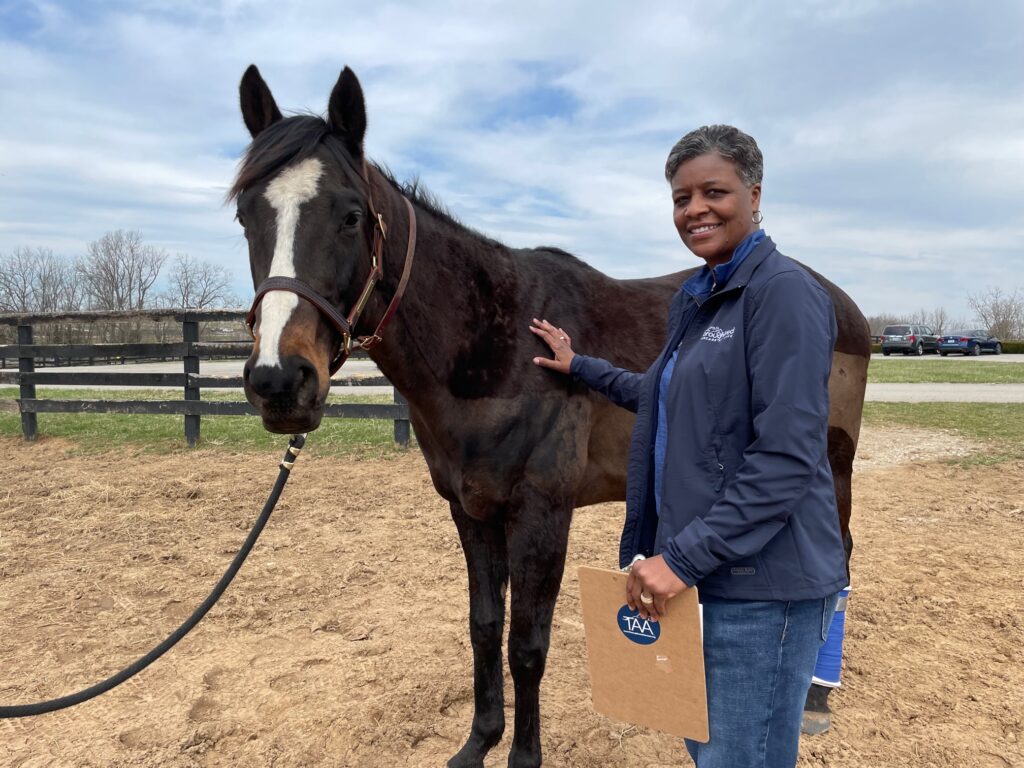
TAA Accreditation and Grants Manager Janice Towles
CHOOSING INSPECTORS
As the inspections administrator, I will inspect as many facilities as possible. Inspections provide opportunity to meet the people doing the heavy work to rehome or retrain Thoroughbreds. We see how the people interact with the horses and the demeanor of the animals toward them. Many of the people at aftercare facilities work on a voluntary basis and have real jobs aside from the operation. The dedication is tremendous and something everyone should be aware of.
For most inspections, I search for worthy candidates to do the job. TAA inspectors are chosen from a list of veterinarians and various equine professionals who have cared for Thoroughbreds at a level commensurate to the experience needed for inspections. They must evaluate each Thoroughbred or program horse, the facility grounds, and operations. The American Association of Equine Practitioners has been a reliable source for prospective inspectors. Other professionals come to us by recommendation or have submitted a volunteer form that is reviewed regarding experience and background.
Coordinating inspectors and inspections is quite an exercise in mapping and communication. Finding the closest possible inspector helps manage travel expenses to keep funds where they are needed most. Inspectors cannot be associated with the facility or organization. In more than 10 years of operation, nearly 200 individuals have assisted the TAA with inspections. While the TAA offers to pay for inspections, many inspectors donate their services, for which we are eternally grateful. Whether paid or volunteering, our inspectors enjoy a sense of participation and pride in theaftercare of off-track Thoroughbreds. They enjoy seeing the dedication from the caretakers and helping to ensure that TAA standards are met.
Inspection questionnaire topics
• RETIREMENT/SANCTUARY
• REHABILITATION
• RETRAINING
• ADOPTIONS
• HORSE HEALTH CARE MANAGEMENT
* FACILITY REVIEW
* OBSERVATION OF HORSES
THE INSPECTION
Like racetracks and various equine farms, aftercare facilities come in various shapes, sizes, and degrees of structure. Differences in climate, terrain, and atmosphere lead to diverse types of fencing, shelters, and feeding programs. As we step onto a facility for the first time, we will greet the owner or manager of the operation and any staff members or volunteers who may be present to become familiar with the types of aftercare services they offer.
The staff are judged not only on their knowledge of the horses but also on procedures and protocols. We follow an inspection form and questionnaire that includes options for comments and suggestions. Specific areas of interest are record-keeping, arrival and departure procedures, vaccination programs, hoof care, preventative health matters, nutrition, unique identification, emergency plans, adoption procedures, and follow-up. The organization representatives are also asked about staffing, volunteer participation, and educational efforts toward the care of off-track Thoroughbreds.
As the inspector is guided through the facility, they photograph points of interest and note any of their observations about fencing, shelters, feed storage, medical supplies, water supply, etc. Overall cleanliness and safety will be the main consideration. Any recommendations for improvement noted from an inspection are passed on to the organization for consideration. Best practices are noted as well, so the organization is commended for actions beyond the standards. Inspectors are our eyes and ears for those places we cannot reach. Some have been so moved that they became adopters themselves.
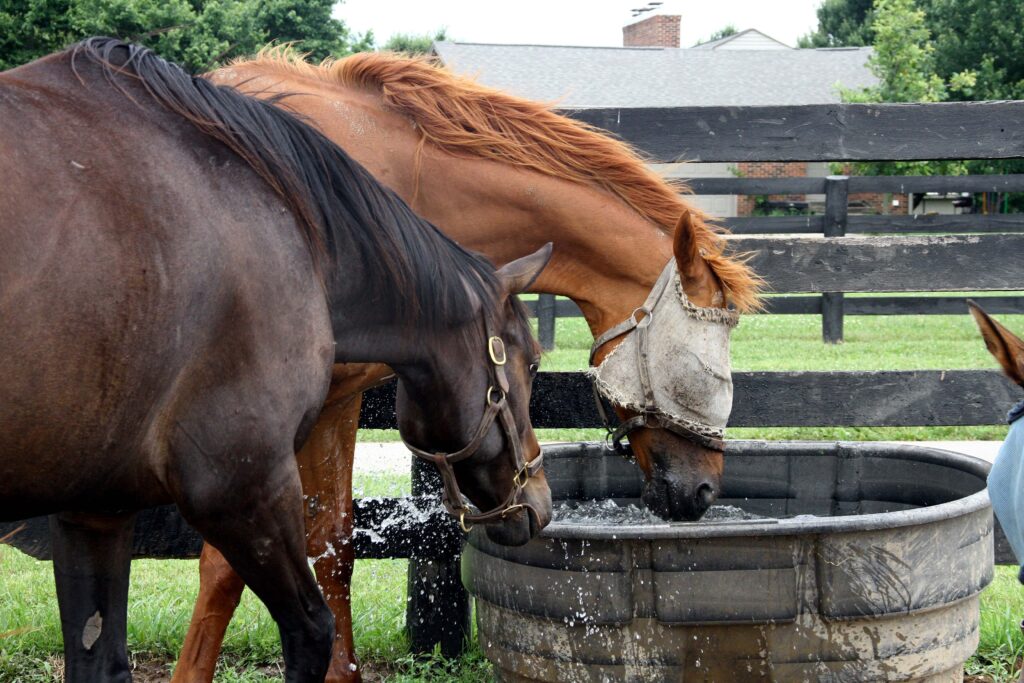
TAA inspectors look over each horse listed by the organization
THE HORSES
TAA inspectors are required to evaluate each horse listed by the organization. I particularly like to inquire about their race record, breeding, and journey, if known. Each horse is a story in itself—sometimes extraordinary. One horse may have raced only once, if at all, and the next may have been a millionaire at the track.
We do not ask our inspectors to do a veterinary exam but judge the general appearance as far as weight, coat, and condition of feet. The inspector needs to be knowledgeable enough to understand particulars that the horse and aftercare group may be facing and make notes. For instance, a recent rescue or retirement, loss of weight from travel, adapting to feed, and injury are some factors that can affect a horse’s appearance.
When the report and photos are turned in, I review each response and all photos, sometimes making my own observations about the organization’s facility and physical operation. The report is then shared with the accreditation committee for discussion. A decision will be made whether to recommend the organization for accreditation to the TAA board.
Most organizations welcome the TAA inspections and have stated that the steps in the accreditation process have given them additional considerations that led to improved operations. TAA inspections also serve to give accolades to those who are responsible for the challenging work of bringing a less fortunate Thoroughbred back to health and to a new purpose in life.
Managing an aftercare facility requires a high level of dedication, passion, and love for horses. The Thoroughbred Aftercare Alliance wants to ensure that the sentimental aspects are matched with a business model that guarantees the longevity of their operation and proper care of the Thoroughbreds.






